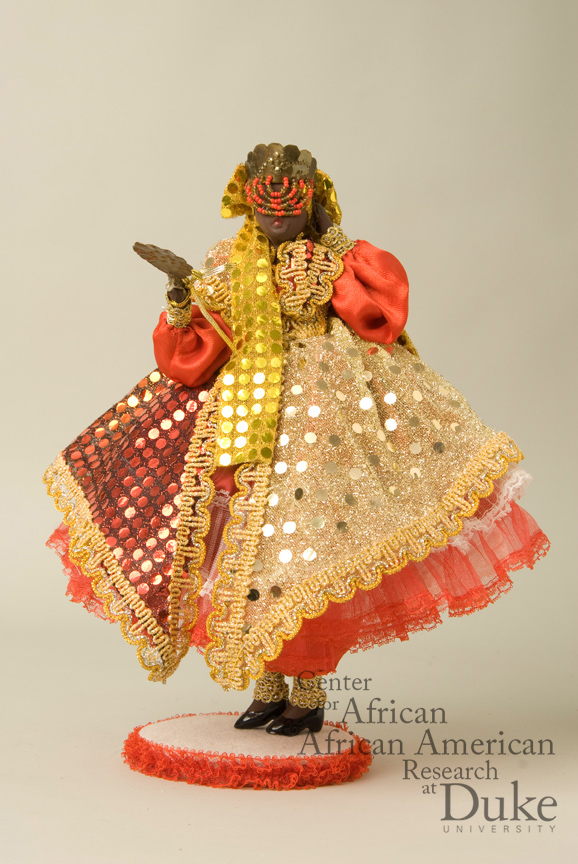



31 cm tall
(centimeters)
Obá is clothed in her ritual colors,gold and red with a brass crown. Colors and numbers distinguish one god from another. The crown features a chorão , which translates to “crybaby.” According to Rumbando Amilton Sacramento Costa, the name recalls the goddess’s tears of joy. In Yoruba land, the beaded strands are on the crowns of monarchs hiding the face and also protecting the people and the land from the intensity of the monarch’s gaze.
She is depicted holding her ear. In the Brazilian tradition she’s a goddess who married in Xangô’s house as his third wife, she was preceeded by Oxum and Iansã. She asked Iansã how she could please their shared husband and Oxum told her as though it were a closely guarded secret being revealed as a favor, that Xango’s favorite food was human ear soup. Obá was excited and tried to find an ear on the marketplace but there were none. So she finally decided to cut off her own ear to please her husband. Xangô came to her house and she presented the soup containing her ear, with Amala (which for Brazilians is a dish made of puréed okra, onions, palm oil and dried shrimp, much enjoyed by Xangô ). Before he ate, he asked what it was. She confessed that she could find no human ears. Xango was appalled and Obá realized she had been tricked. She ran off in humiliation, fell down and turned into a river, the River Oba.
Contact
Sacred Arts of the Black Atlantic Project, Duke University
Box 90091
Durham, NC 27708
Email
jm217@duke.edu